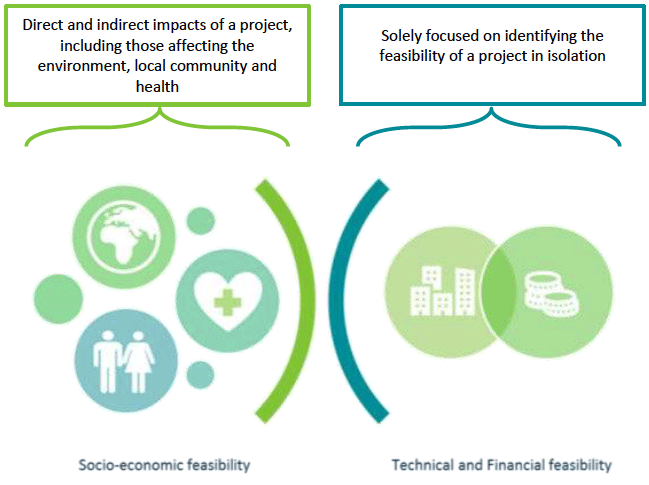LHEES: guidance on strategy level socio-economic assessments
Draft methodology and guidance on how to appraise the socio-economic impacts of Local Heat and Energy Efficiency Strategies (LHEES), through the implementation of Multi-Criteria Analysis (MCA).
Context
Introduction
Policy Context
The Scottish Government’s Climate Change Plan sets ambitious pathways for the decarbonisation of heat supply to buildings and reduction of their energy demand. Energy Efficient Scotland is the cornerstone of delivering these low carbon heat and energy efficiency priorities. The programme will be a strategic partnership with local government, building upon the successful components of existing programmes.
Given the need for strategic planning of Energy Efficient Scotland across the 20 years of the programme, the Scottish Government has consulted in detail on the introduction of a new statutory duty on local authorities to develop Local Heat and Energy Efficiency Strategies (LHEES)[1].
LHEES would be the link between long term targets, national policies and the delivery of energy efficiency and heat decarbonisation on the ground. They would allow local authorities to prioritise and target work, whether that is supporting owner occupiers and SMEs to install energy efficiency measures or encouraging the development of district heating or other low carbon heat.
The Scottish Government has proposed that local authorities would be required to undertake a socio-economic assessment, following guidance, in developing their LHEES. This assessment should demonstrate that priorities have been designated appropriately according to national and local objectives, including fuel poverty.
In addition to LHEES, to strengthen further local authorities existing powers and support the delivery of low carbon heat infrastructure, the Scottish Government has proposed a district heating consents and licence regime. In their application for a district heating consent, developers would be required to undertake a project level socio-economic assessment[1]. The local authority would use the project level socio-economic assessment submitted by the district heating developer to decide on district heating consent applications. It would also use assessments as part of the criteria to judge tenders.
The Scottish Government has proposed that guidance for socio-economic assessment for both LHEES and district heating consents would be made available in the form of detailed methodologies, laying out the overarching process and standard assumptions.
This document provides the methodology for assessing socio-economic impacts of LHEES. There is a separate document detailing the methodology for assessing socio-economic impacts of district heating interventions at project level.
What is socio-economic assessment
The purpose of conducting a socio-economic assessment is to identify and analyse the direct and indirect impacts of a given strategic intervention, relative to its closest alternative course of action.
In contrast to technical and financial analyses, socio-economic analyses estimate the impacts of a project or programme for the community beyond those directly involved in the formulation and negotiation of the content and scope of what is being delivered. In particular in the context of energy and heat, socio-economic assessments allow consideration of impacts on fuel poverty and decarbonisation on a like-for-like basis with financial and technical viability assessments.
Where technical and financial analysis look at whether a project or initiative stacks up on its own terms, a socio-economic assessment needs a basis for comparison because socio-economic assessments look at how a proposed intervention affects the status quo for society, across a range of different aspects.
Figure 1: Illustration of socio-economic, financial and technical analysis of a project or programme

In order to assess accurately all of the impacts of an intervention, it is necessary first to understand where and to what degree a given impact will influence the status quo; for instance, how an intervention in the form of a programme of systematic and significant upgrading of building fabric is likely to affect fuel poverty in a given geographic zone, relative to the status quo of only minimal building fabric improvements occurring over time, in line with compliance to current or planned regulatory requirements. To avoid “cherry-picking” of potential impacts, which would bias the assessment one way or another, a socio-economic assessment must follow a robust, structured approach.
The methodology described in this guidance document has been tailored specifically for the development of strategy-level LHEES socio-economic appraisals. It is developed from best practice guidance from existing literature sources. The intention is that this guidance sits as a comprehensive, stand-alone document, aligned with the existing best-practice guidance available in the UK and consistent with the development of the Green Book Five Case Model in public sector decision-making.
How to use this document
This document provides guidance on how to conduct socio-economic assessments at the strategy (LHEES) level, through the use of Multi-Criteria Analysis (MCA).
Multi-Criteria Analysis (MCA) quantifies all identified direct and indirect impacts by applying user-defined weightings to the identified impacts of a project, reflecting their relative effect on the overall welfare of society.
While the MCA approach does not rely on converting all costs and benefits into monetary values, quantification and weighting of impacts allows for a consistent like-for-like assessment across a portfolio of projects/interventions which simultaneously meet multiple different objectives. This approach is most useful when evaluating intervention(s) simultaneously against multiple objectives, not all of which can be monetised.
This document is intended for local authority practitioners and project managers across Scotland, who, under Energy Efficient Scotland, may be required to develop socio-economic assessments at strategic level, particularly for LHEES.
This document aims to guide the user through the step-by-step processes that are needed to conduct an effective, robust socio-economic assessment. Concepts have been clearly established and based on best-practice guidance, and the approaches outlined are replicable and clearly illustrated with relevant examples.
The structure of this document focuses on:
- communicating the inputs required to conduct socio-economic assessments;
- detailing how to set an appropriate baseline scenario;
- the process of calculating MCA;
- the key outputs which should be expected from these assessments; and
- the importance of conducting uncertainty and sensitivity analysis for socio-economic results.
Contact
There is a problem
Thanks for your feedback